I’ve looked at picking up film cameras for peanuts before on this site. I thought I could see what I could get for a pound or less in digital cameras. The DX-10 is a 1999 early consumer model came through the door for just 99p before postage. But is this camera that once cost £250 worth a look ?
Digital at Fujifilm
Fujifilm have been a major player in the development of digital cameras since the beginning. They demonstrated their first video still camera in 1985 but would be pipped by Canon to launch first.
But more important was the 1988 Fujix DS-1P. The first true digital camera publicly shown to the world. It never launched commercially but the 1989 Fujix DS-X according to Fujifilm was. (There is some debate about this).
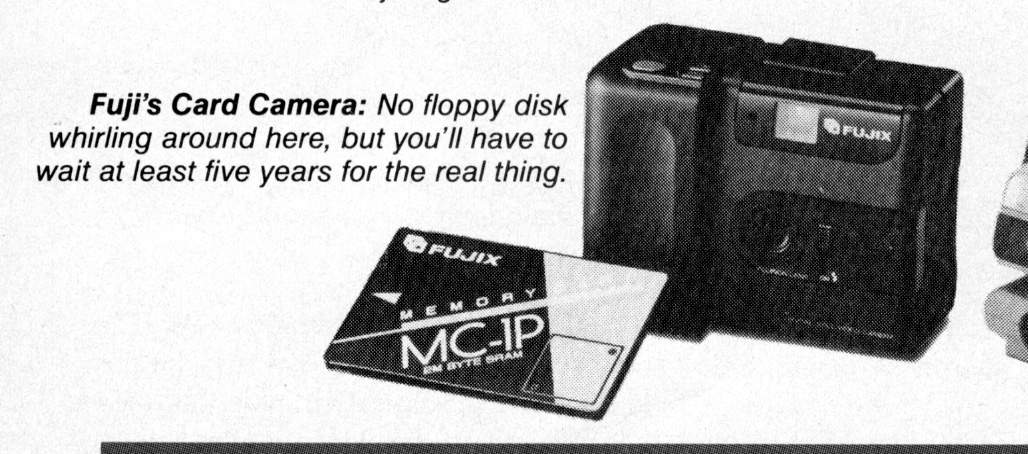
A decade later when the DX-10 arrives. By then Fujifilm was one of the 4 leading digital manufacturers by sales. Alongside Canon, Nikon and Olympus, they collectively made up 60% of the sales in 2000.
The DX-10 was the last DX camera. It was also known as the CLIP-IT80 in Japan. Confusingly DX models along side other cameras were sold under the CLIP It labels in Japan.
The camera likely evolved into the MX-1200/Finepix 1200 which seems only differs with an updated 1.3 Mega Pixel (MP) sensor. Both that and the DX-10 aimed for entry level consumer. The Launch price of the DX-10 was $299USD although street price was nearer $260-270. It sold for around £250GBP here in Blighty according to the review in Steve’s Zone.
That’s not an uncommon price for a pre 2000 basic digital. The list price equates to just under $470USD today which will buy a DSLR with lens kit and still get some change. But this was a different era.
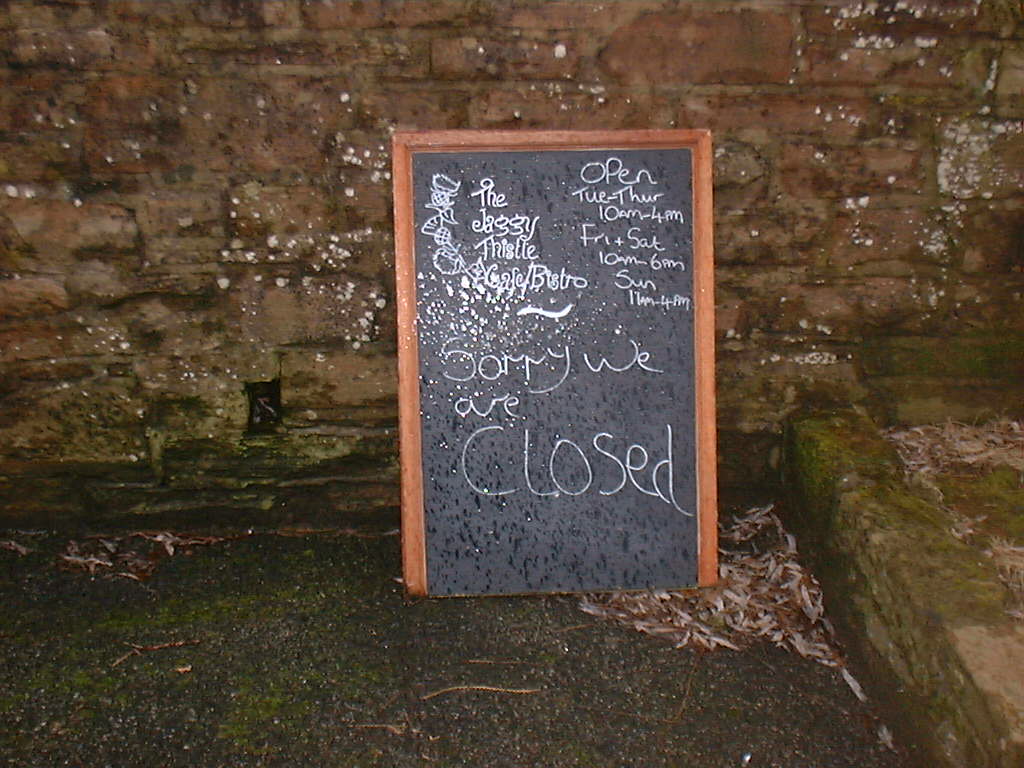
Design
The DX-10 is actually fairly streamlined but big compared to a basic digital today. It’s more like the size of a cheap 35mm film camera. It looks pleasing enough. All the functioning bits are lopsided presumably to make way for the 4 AA batteries (it’s very happy using rechargeables). It’s a plastic body with a two tone effect and seems to have been available in 2 styles at least.
On camera-wiki there is a version that is almost a complete reverse with black /silver to my silver black model. there is no lens cap or cover. The lens is protected by a glass panel. On the rear you have a command dial, jog button and LCD. that’s alongside the on/off switch
Under the hood of the DX-10
Pretty basic by today’s standards and not exactly high end by 1999 standards. there is a 0.8 MP 1/3″ CCD sensor. This gives 4:3 images 1,024 x768 pixels (aka XGA). That’s matched to a 5.5mm 1:4 Fujinon fixed focus lens. That’s equivalent to a 40mm on a 35mm camera.
The camera offers the tosh of digital zoom which you’re best to ignore (just crop the shot later).
The focal range is from 0.7m to infinity in normal mode but a small switch on the side allows a macro mode of 10cm.
Surprisingly this features a 64 zone TTL metering system (pay attention high end Canon G1). Kinda makes up for the focus I suppose. On paper this is much better than many digitals made even a 3-4 years later. The manual lists shutter speed from 1/4 to 1/5000 sec and ISO fixed to be equivalent to 150ISO. Aperture appears to be either f/4 or f/8. In use I go down to 1/3 sec. There is no image stabilisation as you’d expect. The camera does warn of shake and has a self timer mode and tripod mount.
Storage
So the good news is this has removable media and that media was designed for cameras. Sadly it’s Smart media and a a word of warning you will gamble more on getting a card that works than buying the camera.
Smart media arrives in 1995. The crapness of the format probably gets best illustrated by the fact its ‘lofty’ ambitions were to replace the floppy disk. In the mid 90’s it looked attractive. Most of the alternatives were frankly crap with the exception of compact flash.
Smart Media is a ludicrously thin format even today but not that small in other dimensions. Weirdly it is actually bigger than Compact flash when laid out . It achieves this by having just a single NAND flash chip and no built in controller. It achieved quite a success initially and by 2001 wikipedia indicate it cornered half the market. But it would rapidly die off.
What killed it was the design limitations. The single chip design meant a limit to maximal capacity. No Card bigger than 128MB was ever release which was fine for our DX-10 in 1999 but within a few years GB storage capacities were typical. Worse still is the format has no inbuilt wear levelling which means the cards burn out much quicker than rivals. Worse still is the fact it is possible to corrupt these card making them unusable even with a format. Fujifilm and Olympus switch to xD cards which allowed for bigger capacity but guess what – no wear levelling.
Funnily they died out too.

Flash, LCD & Viewfinder
Built in flash offers a range from 0.7-3m at f/4. There is no way of connecting an external unit. It’s default mode is auto but usig the men system you can switch to red-eye reduction, forced on and forced off
The rear 1.8″ LCD panel offers 70K pixels (that’s less than 320×240). It is typical of the era and mines is looking a little washed out. It struggled in bright light but actually was more useable than some later cameras. In those circumstances the simple viewfinder is of help. It suffers from Parallax error so the camera actually recommends just using the LCD in macro shooting.
Command dial
The big chunky command dial is the way you access every mode even it’s direct print mode. For shooting you actually just have 3 modes. normal, timer & manual. Manual is basically like normal but you can adjust WB , EV, flash EV, slow sync and set for continuous shooting (9 shots in 2 seconds).
The other modes allow you to set up the camera (including toggling the flash from auto to on, off & red eye), Other setting include playback and direct printing but also weirdly dedicated file delete and protect options.
Irritatingly most camera settings need to be set in Setup. It is worth flipping quality to fine from the default normal as it has a massive impact on the levels of compression
There is no video mode. Not surprising but I always view that as the killer app for digital cameras moving forward.
Linkage
Although USB had arrived in 1996, this camera linked to a PC via the RS-232 Serial cable. The PC I type on lacks that port and the cable was missing. So I can’t tell you if the camera works on a modern PC & O/S like windows 10. I was able to use a the 2003 Olympus Camedia C-120 which connects via USB as a card reader. You can also buy USB Smart media card readers for a few quid but be aware many modern readers don’t have a slot for it.
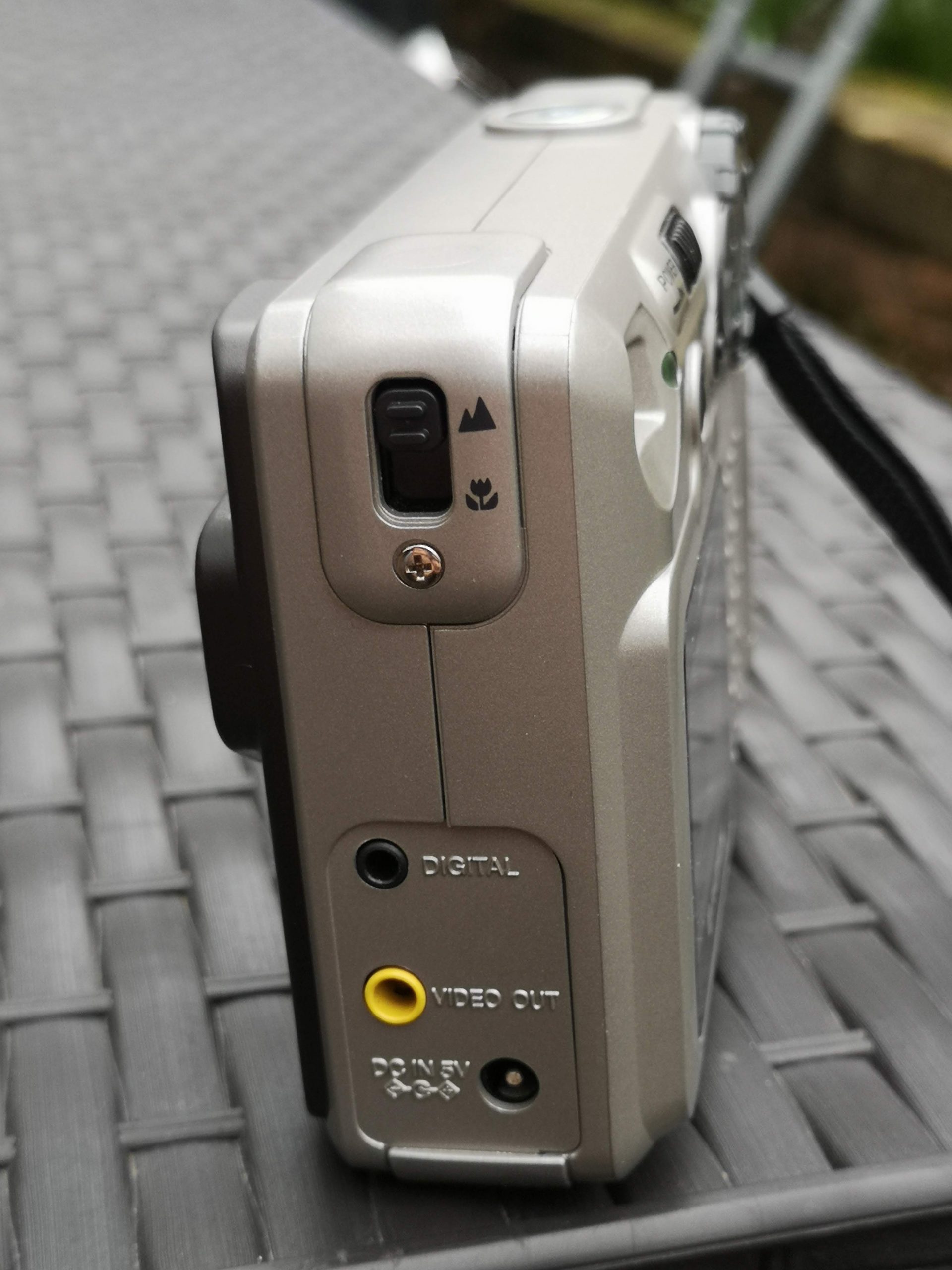
There was also a single RCA cable for playback on a TV. Again mines was missing so can’t test that. There was an optional DC PSU.
DX-10 in Use
Although it’s unloaded weight is just 200gms things gear up with 4 batteries in. It is surprisingly heavy loaded out but still wieldable 1 handed. The on switch is surprisingly stiff but that might be an age thing. Very slow boot and then it charges the flash before you can use in low light. By default it shoots with the screen off and that takes several seconds to come up making it on average 10-15 seconds to go from on to ready in indoor situations. The lag turning on the screen is glacial and in fact the shutter button lag is less noticeable because of it. Lag is under a second with screen on for shot.
There is no dedicated flash button so to control the flash you need to head to setup and circle between the flash options.
Unless the LCD is in use you don’t get a review image in it. the camera has the usual bleeps to let you know you’ve recorded a shot.
Results
I wasn’t expecting much from this but it did better than I suspected. But given my expectations were pretty low don’t get to excited.
Metering
The metering is okay in good light. But I’d twigged there might be some issues as it seems to be the same or similar to the metering on the 2003 FinePix S3000 bridge camera I tested a few months back. Both struggled a bit on overcast days making for dramatic skies but underexposed foregrounds. The same happened with brighter skys and lower lit foregrounds. This isn’t helped as the dynamic range of the sensor is only marginally better than non-existent.
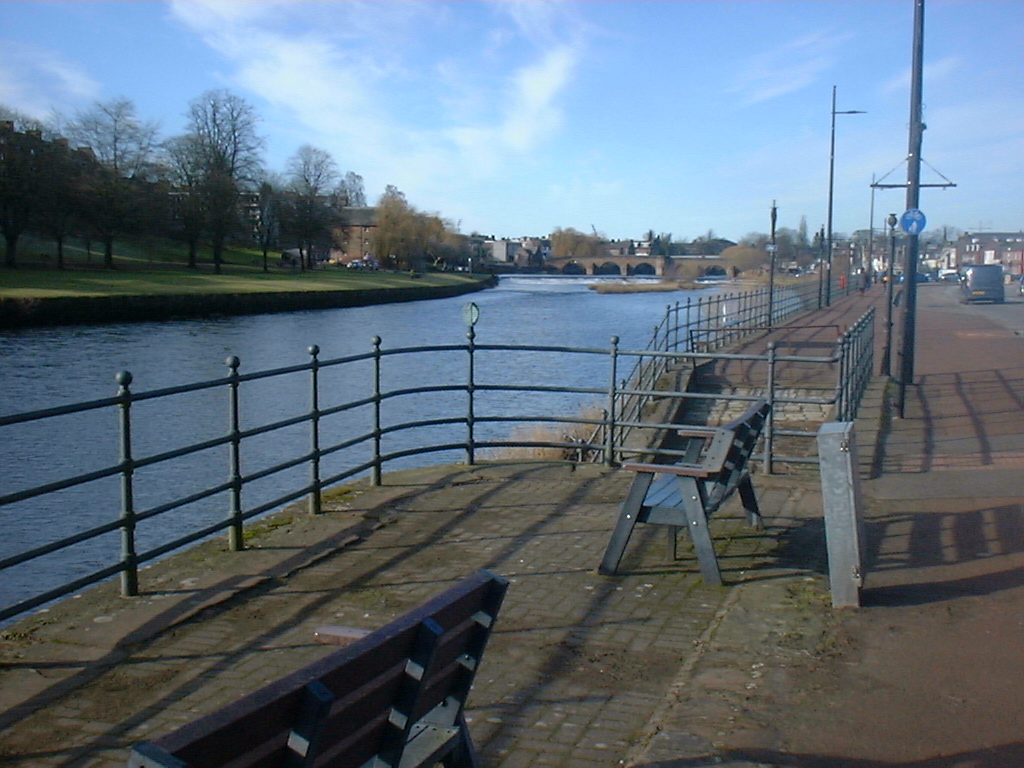
With more uniform lighting or using flash things are better and it copes generally well. Flash broadly works well within it’s limitations. And the camera does give you Flash EV compensation. That’s not something you’ll find on Today’s budget numbers.

Forget night shooting. You can get by but it’s a push with the ISO locked at 150ISO and maximal exposure of f/4 @ 1/4. To achieve that you’ll need to tripod mount or brace the camera as there is no image stabilisation.
Optics
Optically this no classic fixed focus lens. It fustrates me a bit as Olympus put brilliant optic on their PEN EE half frame cameras back in the 60’s but yet we have an all singing and dancing digital from a big Japanese make 4 decades later which is wobbly to say the least. Fuji aren’t alone for basic cameras but they were looking for nearly 300 dollars for this.

In fairness the DX-10 isn’t much worse optically compared to the 2003 Olympus Camedia C-120.
The Lens is tad soft and this worse the more you move away from the 1-5m sweet spot and from the centre of the image. It’s better than a disposable and cheap 35mm cameras. There is some barrel radial distortion but it isn’t that noticeable. Macro mode can be sharp but you’ve got to be en pointe with this. There is a little fringing evident but this isn’t as noticeable as the processing artefacts.
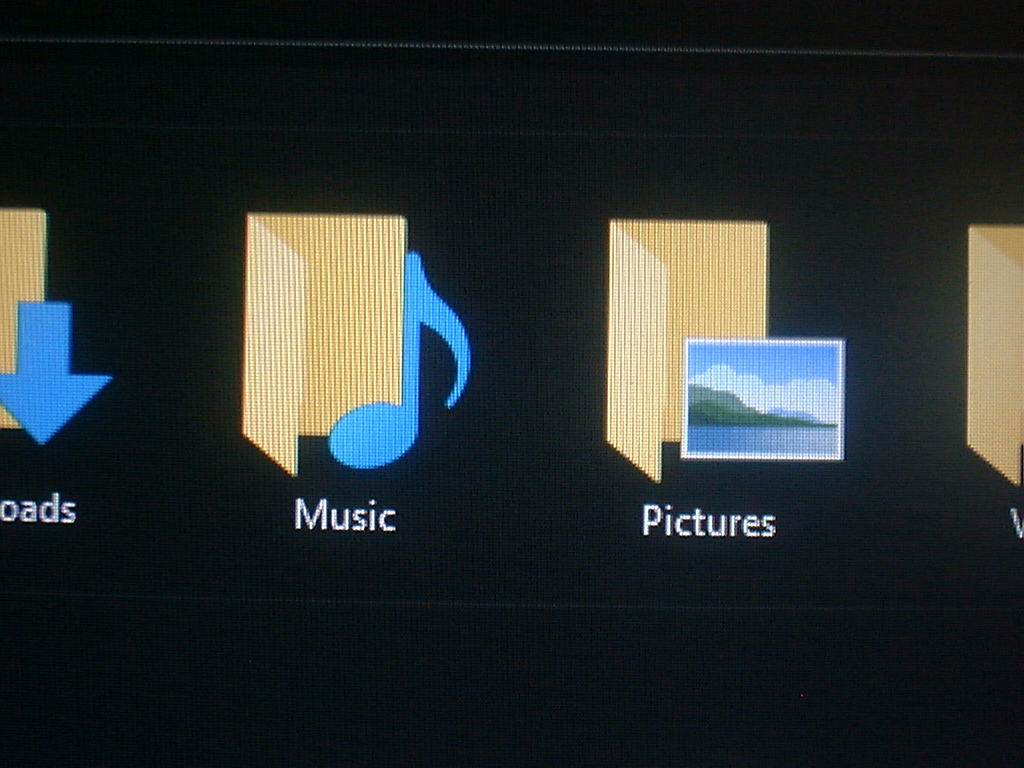
Processing
That gets more complex by the camera’s notable over sharpening and compression artefacts. This creates a dilemma today do you live with that to improve image or do you go with softer shots which you can try and sort in post. But given the 0.8MP and lack of RAW – it probably is easier to leave turned on. The camera’s sharpness setting are accessed in setting mode.

As mentioned earlier buy the biggest smart media card you can find and stick the camera to fine on the quality mode. Normal saves you space but the compression really impacts on the shots.
Colour balance is pretty good. This camera has the typical muted, natural palette you get from Fujifilm film and digitals. It broadly did well but like many cameras of it’s age struggled a bit on AWB with modern LCD bulbs giving a yellow/orange cast.
The shots are okay for web work and small prints though. My new but cheap HD webcam takes stills of similar quality but with more distortion.
Price now to then ratio
So the DX-10 in the UK cost around £250GBP new meaning I paid about 0.4% today. The camera was supplied with a not very whooping 2MB smart media card which to be frank you’ll need to replace to use (mines was missing) as it can hold about 7 photos. A second hand 64MB card will set you back 8-12 times the cost of this camera and runs the risk of becoming toast pretty quickly.
Final thoughts on the DX-10
The DX-10 is best seen as an example of the evolution of consumer digital photography rather than a practical shooter. Early Prosumer cameras like the 2000 Canon Powershot G1 can kinda still cut it today. But this at best compares to a modern cheap webcam.
It is a thing of it’s time and perhaps tellingly was deemed by Image Resource as “an ideal first camera” . Entry level cameras would be hugely better within years and selling for half it’s cost. My Olympus Camedia C-120 is a much better deal despite having a equally not great fixed focus lens. It is faster in use and has less sensor issues and can be plugged into amodern PC saving you a bob or to on quirky card readers.
And this explains why digital sales wouldn’t really pick up until then. September 1999 Popular Photography carried an ad from B&H. The DX-10 was being sold for $269.95USD with a free Smart media to floppy adaptor. The same ad shows you could have bought a lot more film camera for your money. In fact you could buy either an olympus mju-II (stylus Epic) plus a Yashica T4 super plus or lens kit Canon EOS Rebel G (500N). And still have money for film.
And I suspect you’d be doing well to pick a T4 and mju II for $269 today.
As to the DX-10 ?
Unless you have a hankering for historical mediocrity hold onto your quid.
Other information
in addition to the items linked in the post DigitalKamera Museum and camera-wiki both have pages on this.

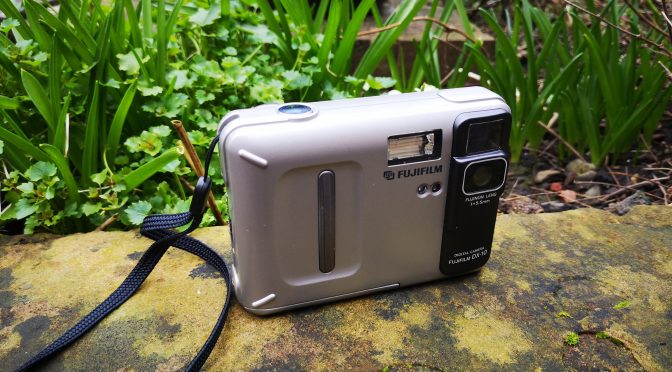
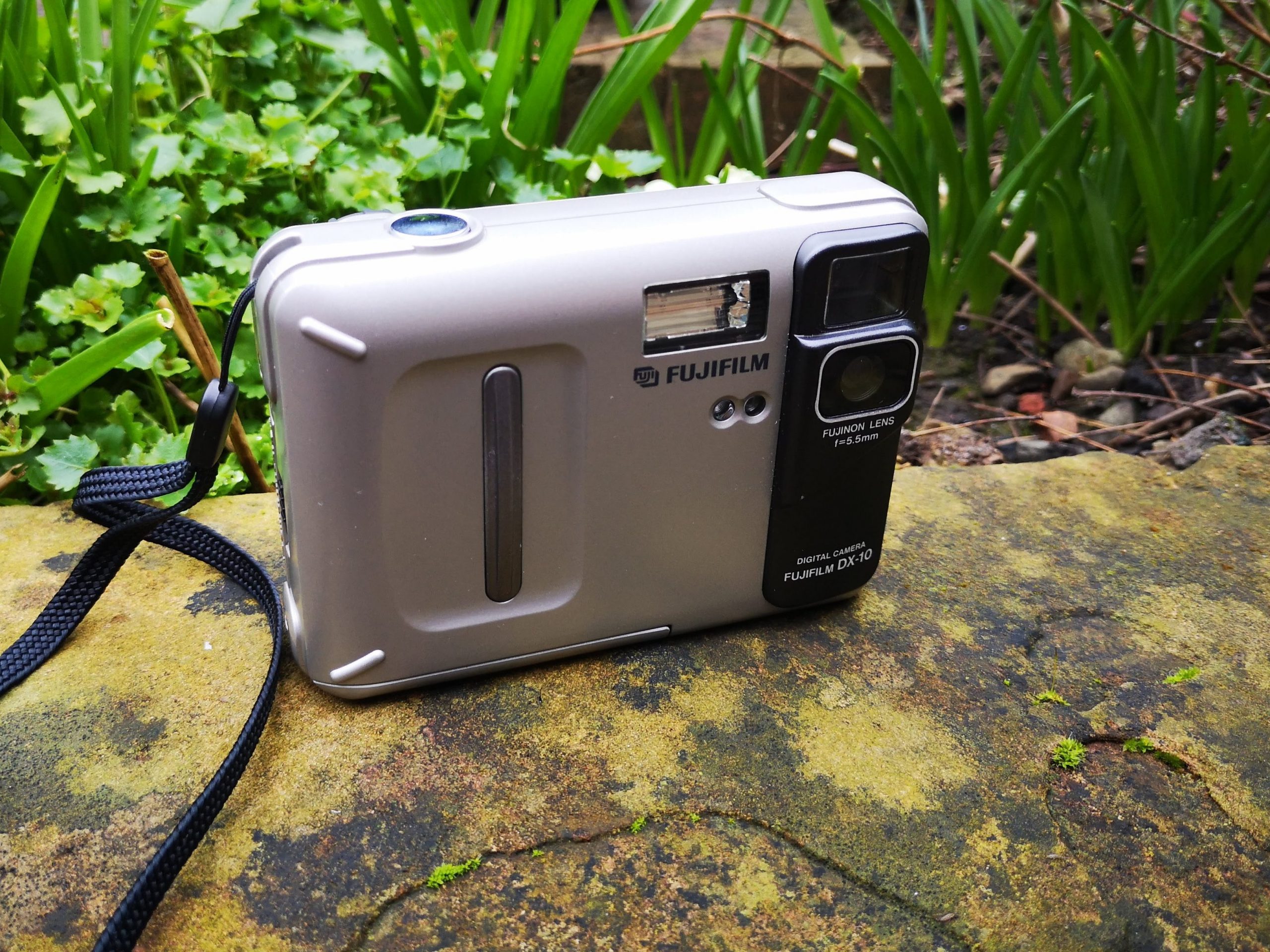
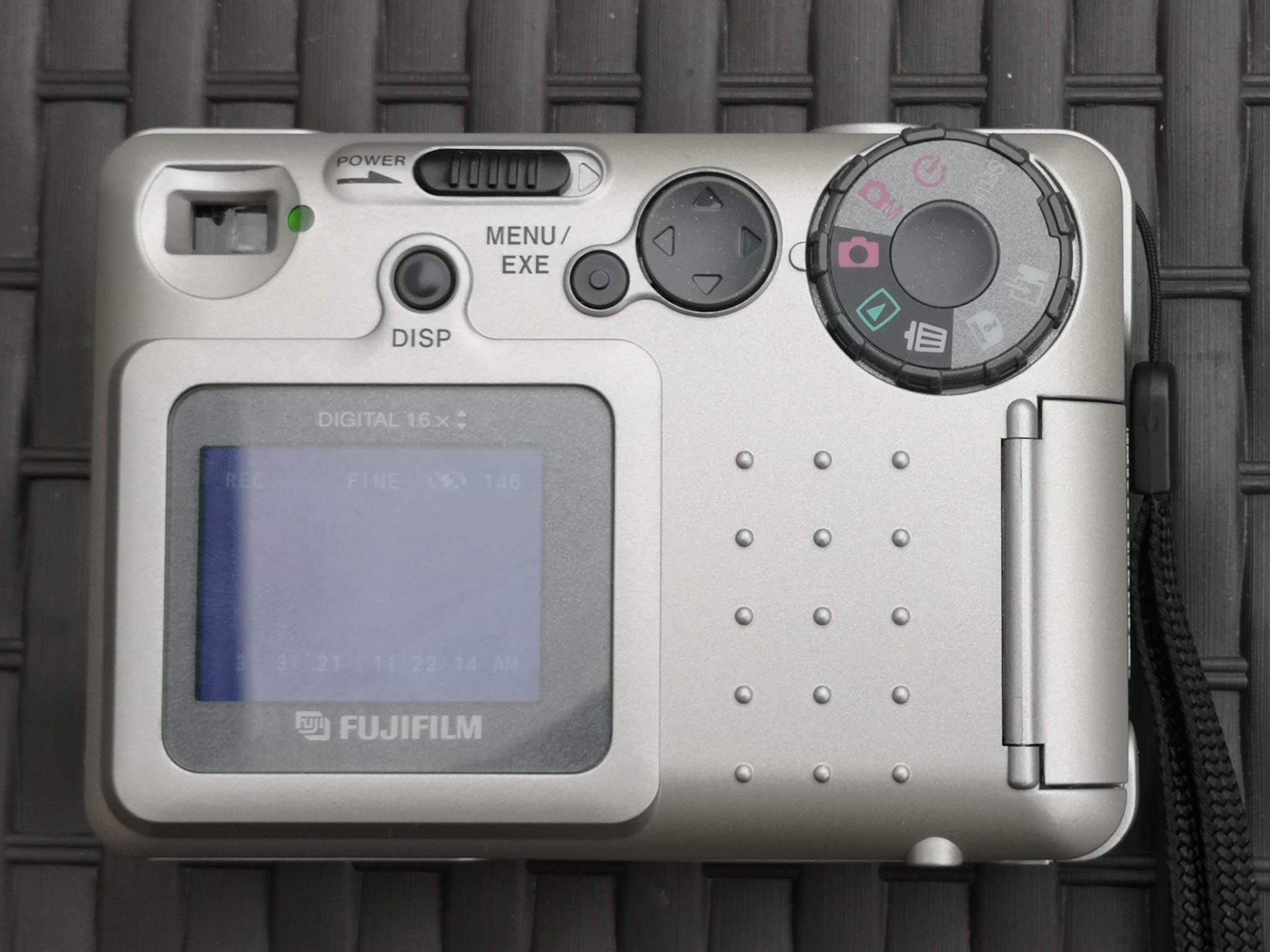


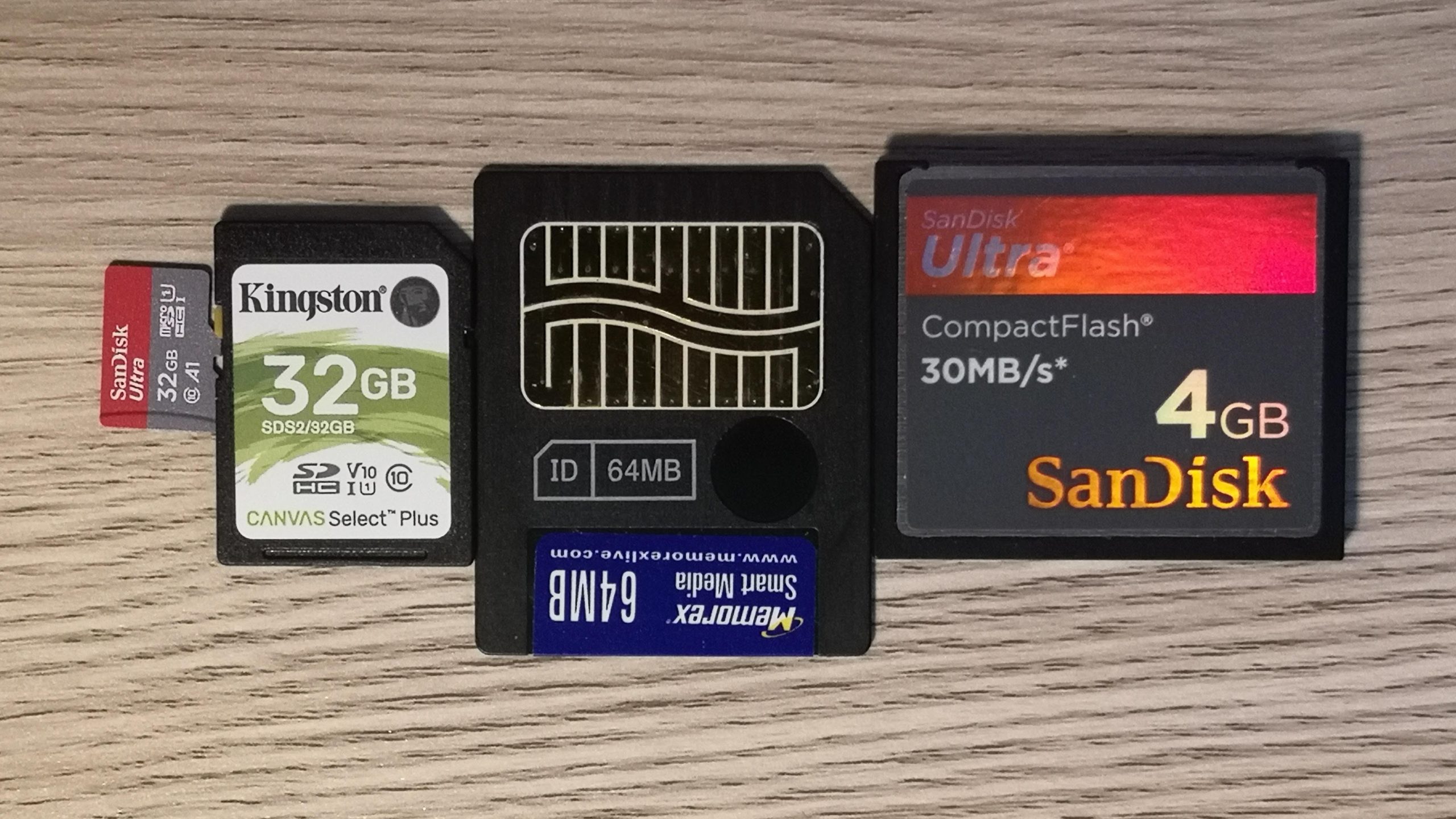
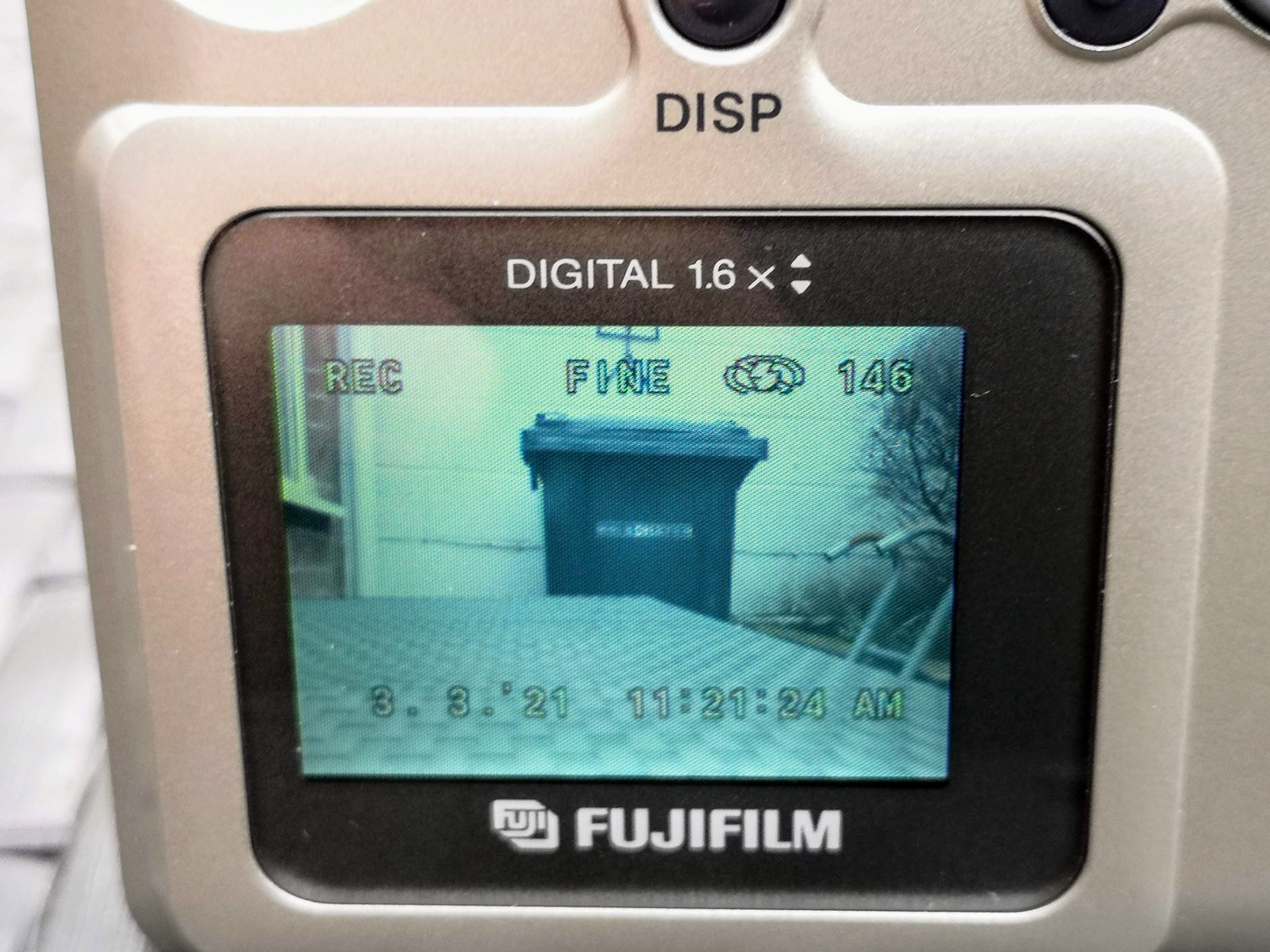
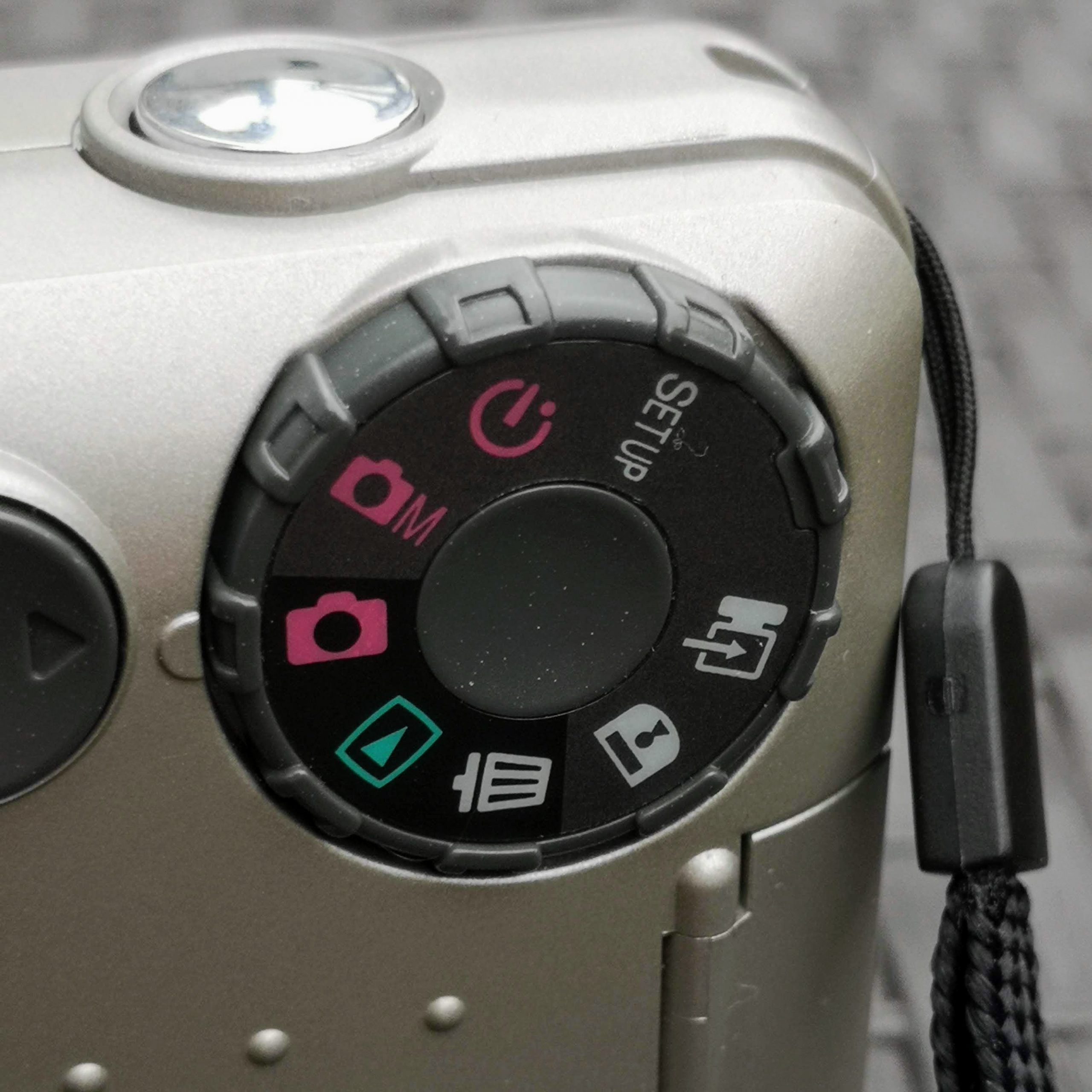

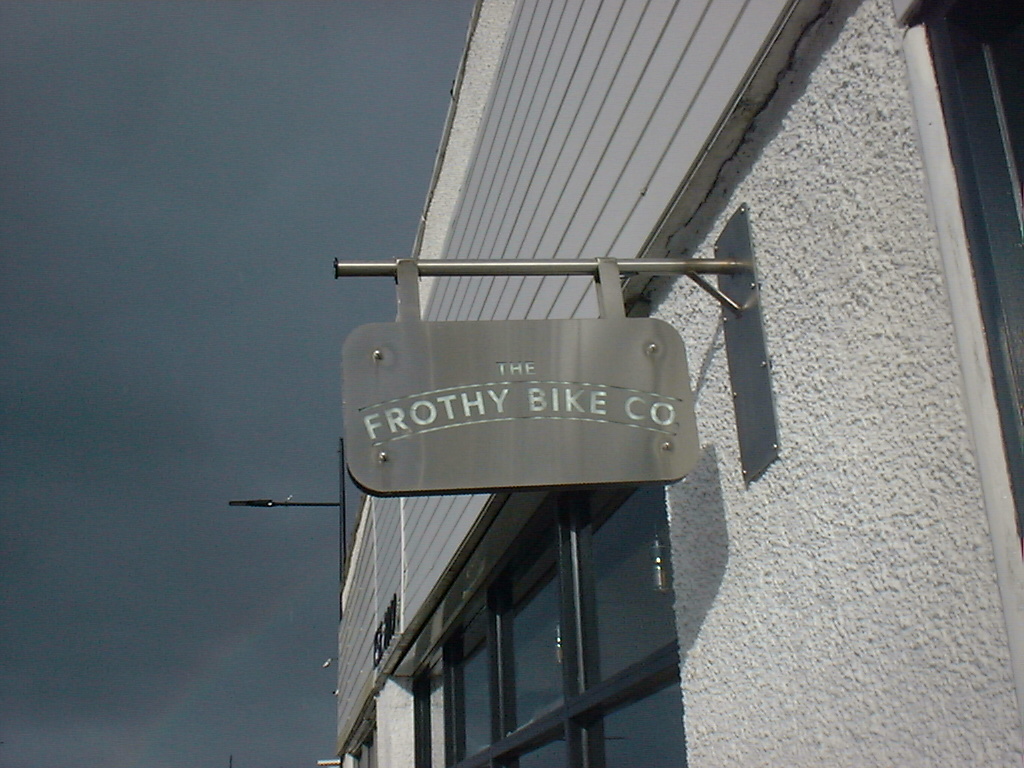
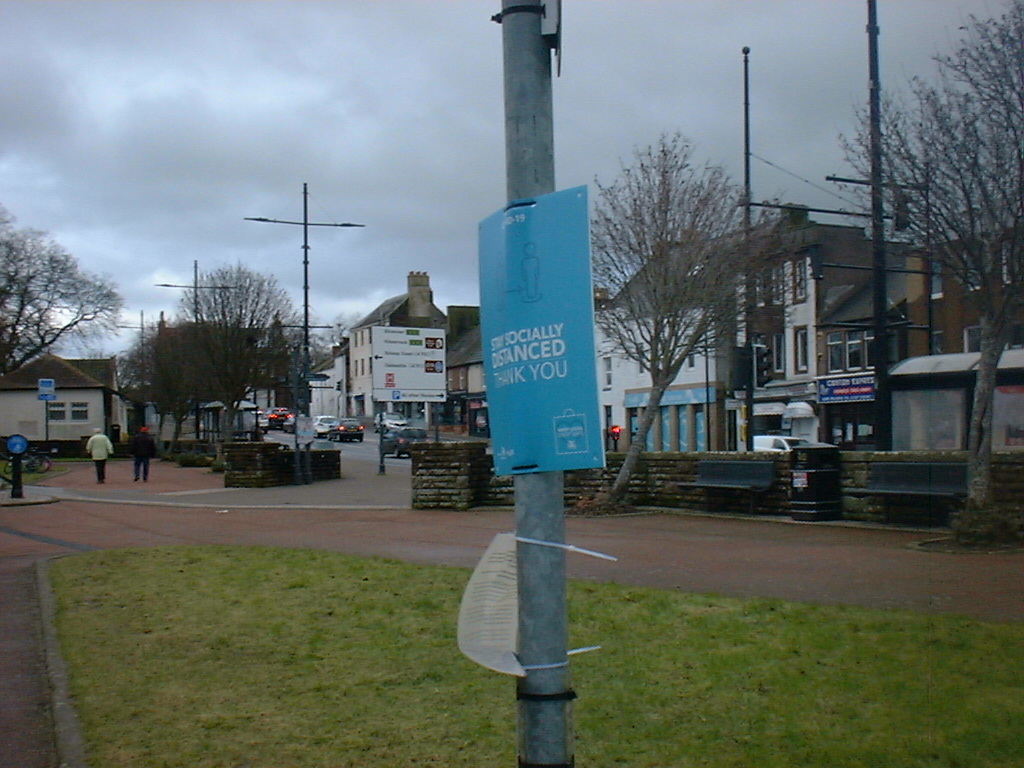
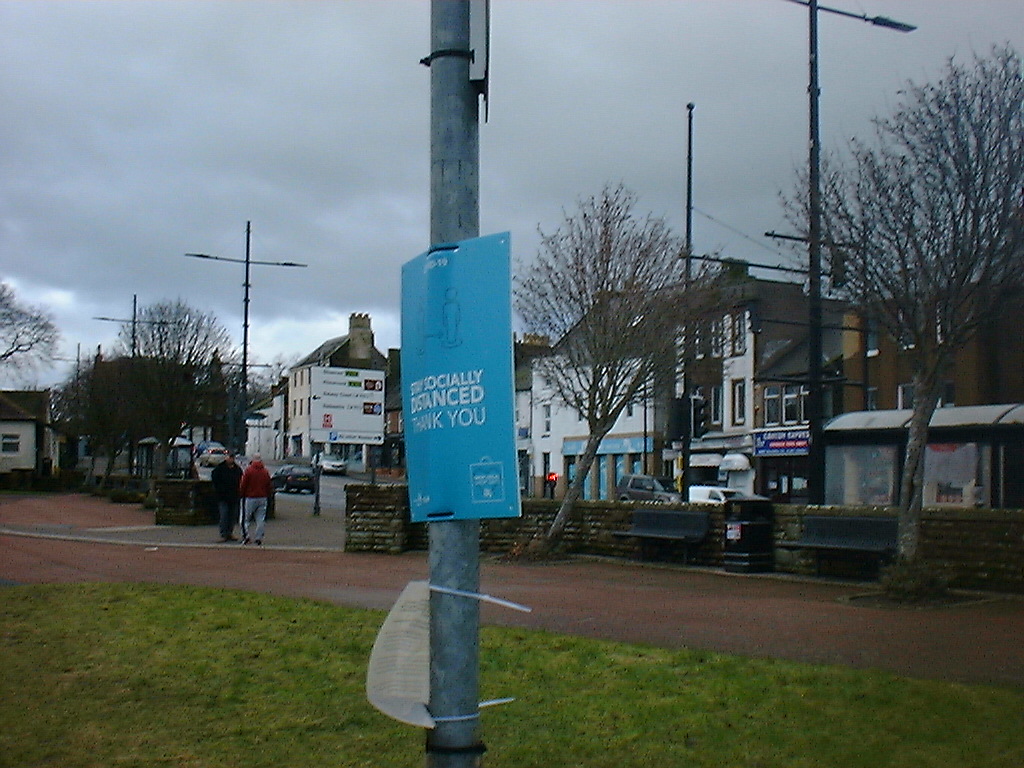



Solid review. I don’t know that I’ve ever seen one of these before!
Best thing about these older digital cameras is the decent eye level viewfinder. Must admit my first digital was a Fuji A202 with XD card, which nearly 20 years late still works OK. 2M sensors means decent 6×4 prints. Will be keeping an eye out for this one though, looks interesting.
You should look at some of the Canon digital point and shoots which support CHDK. Some of those are already very capable and priced regularly under £10, even £5- but with CHDK you unlock RAW support on them for extra fun, amongst other things. I recently got an IXUS 1000HS for £3 which is already a capable camera- 240fps slow mode, 1080p 24fps recording, image stabiliser, 36 – 360mm lens etc. Worth seeking out.